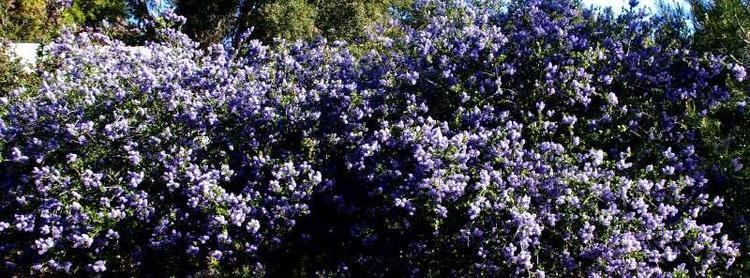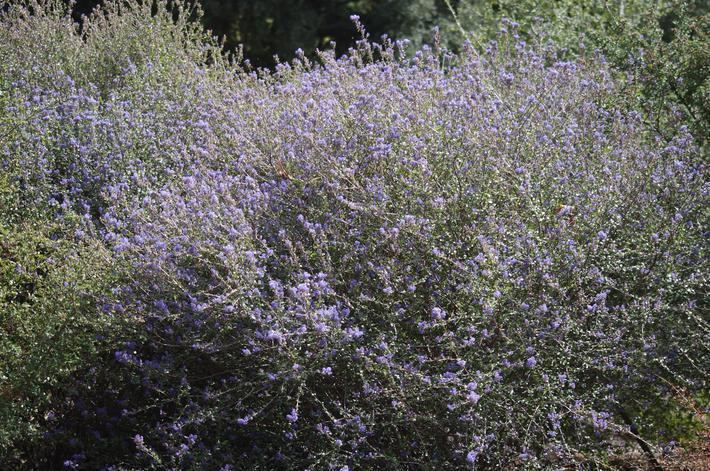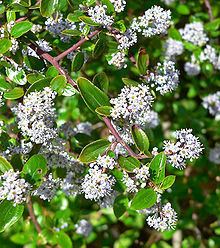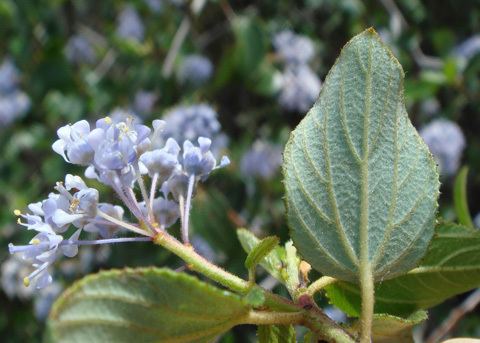Rank Species | Genus Ceanothus | |
 | ||
Similar California lilac, Ceanothus leucodermis, Ceanothus crassifolius, Ceanothus megacarpus, Ceanothus spinosus | ||
Ceanothus oliganthus is a species of shrub in the buckthorn family Rhamnaceae known by the common name hairy ceanothus, or hairy-leaf ceanothus.
Contents

The variety of this species known as jimbrush (var. sorediatus) is sometimes treated as a separate species.
Habitat and range

It is endemic to California, where it can be found in most of the coastal mountain ranges in dry habitat such as chaparral.
It is found in the Santa Monica Mountains of California.
Description
This is a large, erect shrub approaching 3 meters in maximum height.
Leaves and stems

The stipules (small leaf-like structures on the stems at the base of the leaf stem, are thin and fall off early.

The evergreen leaves are alternately arranged and may be up to 4 centimeters long. They are dark green on top, paler and hairy on the underside, and are edged with glandular teeth. Leaves have 3 main veins rising from the base. Leaves have a toothed edge. The leaf is covered with short, soft hairs on the top.
Branchlets are flexible, not stiff.
Inflorescense and fruit
The inflorescence is a cluster or series of clusters of blue or purple flowers.
The fruit is a capsule which may be hairy or not, depending on variety.
The fruit is not horned.
It blooms April to May.
